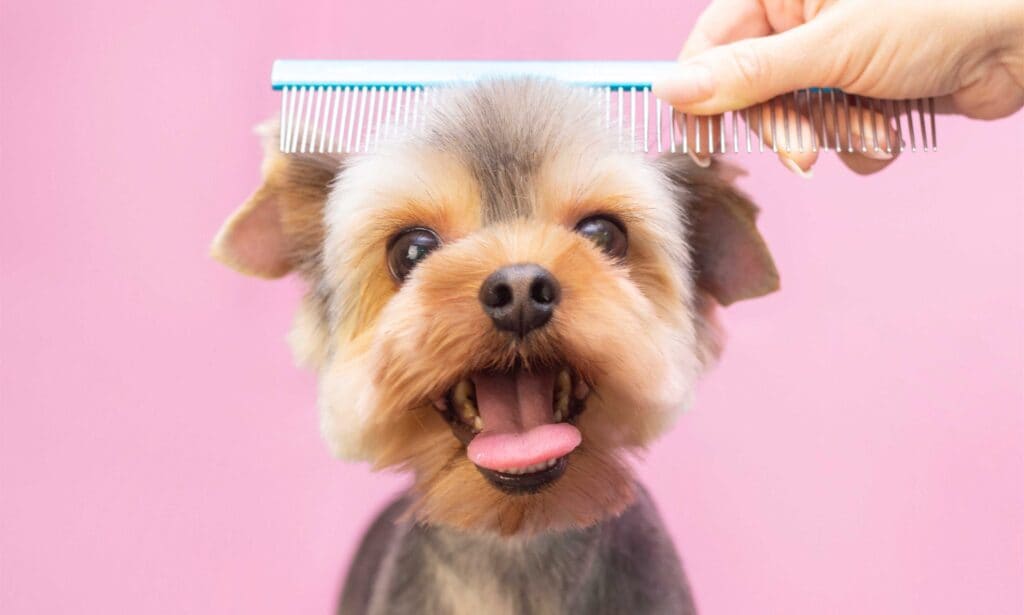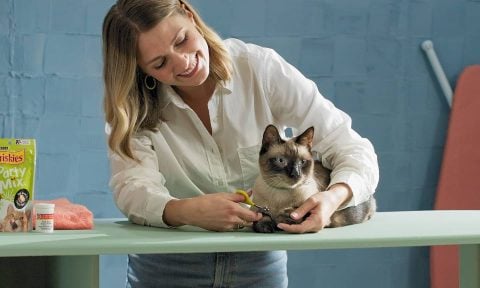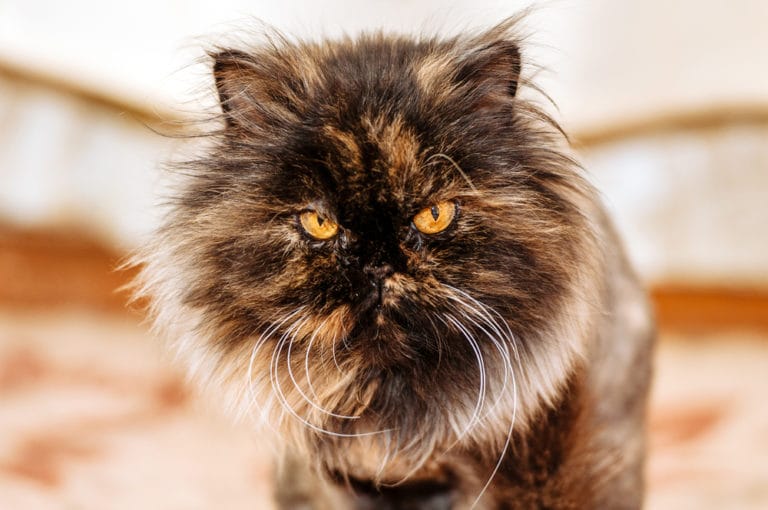Let's face it: In these busy times, it may not be possible for you to see your favorite hair stylist, let alone take your pet to their stylist. It can be hard to find the time to take your dog or cat to the groomer. If your pet is looking a little rough around the edges, you can do some cat or dog grooming at home to keep them looking and feeling their best. Not to mention, it’s a great way to bond with your pet.
"Pets enjoy being touched and paid attention to, so grooming can be pleasant if it's a regular part of their routine," says Daryl Conner, a Master Pet Stylist at Fairwinds Grooming Studio in Appleton, Maine. "Many people find it very satisfying to spend this type of time with their pet. Having a neat, tidy, tangle-free coat to admire and pat is pleasant, too."
From brushing to bathing, here’s a cheat sheet for pet grooming at home.
Pet Grooming at Home 101
Bathing Beauties
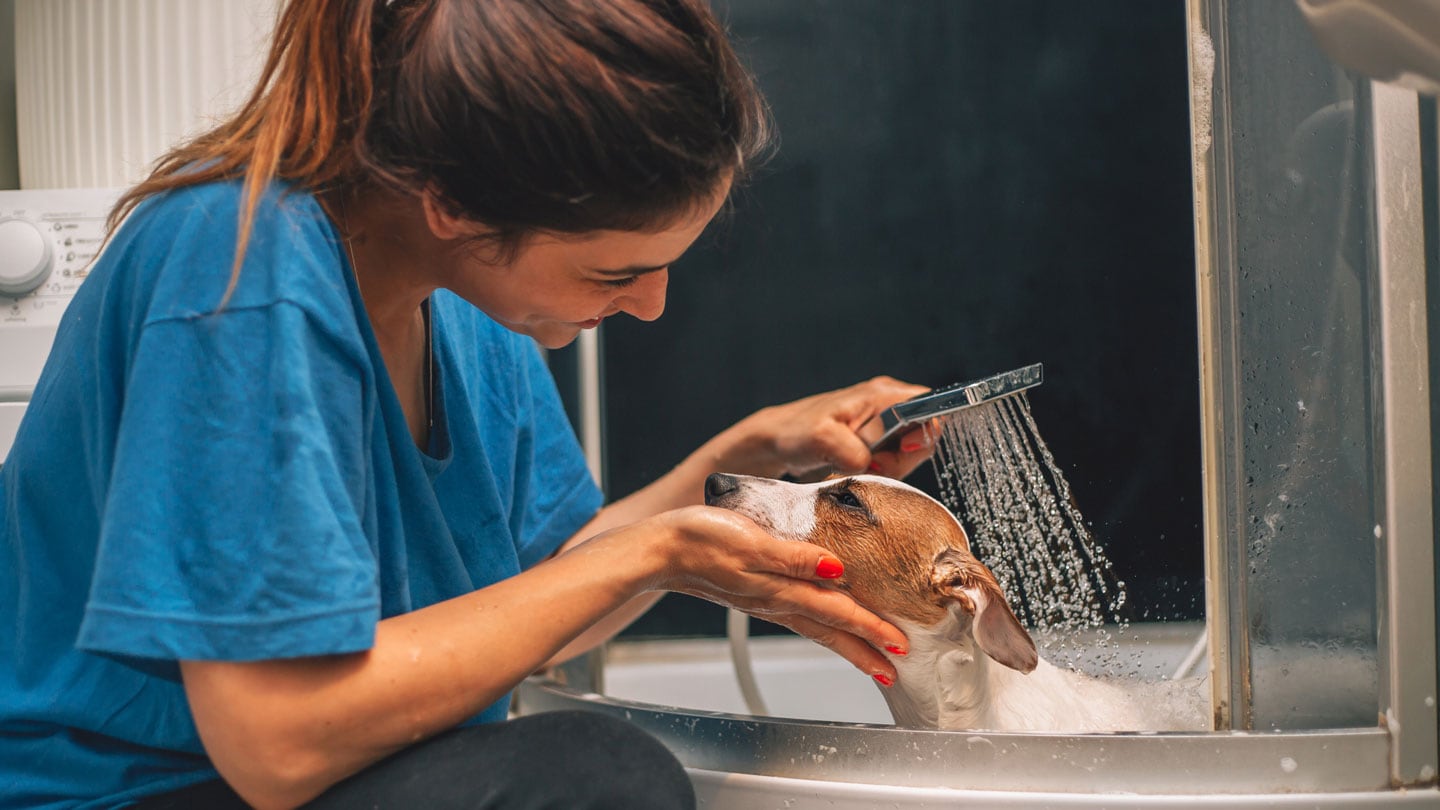
Photo: iStock.com/Obradovic
If you’ve been spending a lot of time relaxing at home, binge-watching TV, you can probably skip a shower or two. (That’s what dry shampoo is for, right?) Just like you, your dog’s activity level impacts their bathing needs.
How often to wash your pet
The less they’re out and about getting dirty, the less frequent they’ll need a bath.
"If [you use] a quality [pet] shampoo, followed by a conditioner, dogs can be safely bathed once a week or whenever they don't smell nice," Conner says.
Cats generally require less bathing than dogs do, although it depends on the breed.
"Cats—except breeds that produce excessive oil like the Sphynx—don't require frequent bathing, though it is not dangerous for them," says Conner, who also serves as vice president of the Professional Cat Groomers Association of America.
Tips for washing your pet
If your nose knows it’s time to give your pet a bath, Conner says to start by washing from behind the ears and working your way back toward the tail, saving the face for last.
When rinsing, it’s the opposite: Start with the face to decrease the chances of shampoo getting in your fur baby’s eyes.
Once you have washed and rinsed your pet completely, rinse again—yes, two rinses.
"Shampoo or conditioner left in the coat will attract dirt, cause tangles and can irritate animals’ skin," Conner says.
And always use a shampoo and conditioner formulated specifically for pets. Conner recommends TropiClean’s Gentle Coconut Hypoallergenic shampoo and their Kiwi & Cocoa Butter Moisturizing conditioner.
Another pro tip? Mix a little pet shampoo with some warm water in a cup or bowl. Dip a kitchen sponge into the diluted shampoo and use it to apply product to the coat.
"This works well to evenly distribute the shampoo—and conditioner!—through the coat," Conner says.
Nails on Point
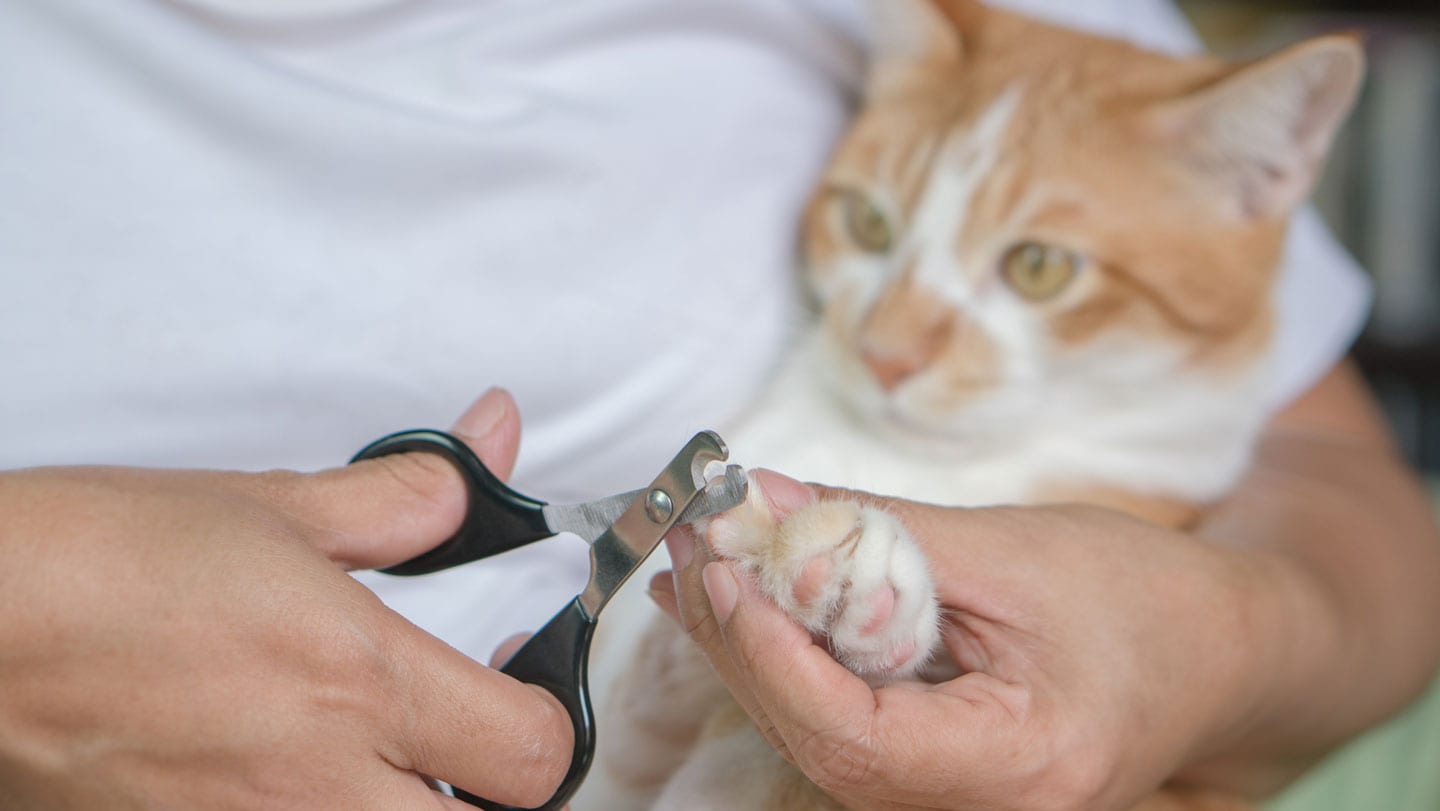
Photo: iStock.com/jamesjoong
The next time you’re thinking about doing your nails, you might want to think about doing your pet’s nails, too.
How often to trim your pet's nails
You don’t have to give them a full-on paw-dicure (unless you really want to be extra), but dogs and cats do need to have their nails cut generally once a month, Conner says.
Not only do regular trims protect your floors and furniture, but it prevents painful ingrown nails and infections.
Tips for trimming your pet's nails
To start, make sure you have a good set of sharp nail clippers. Conner recommends these clippers by Millers Forge and says a pair of medium-sized clippers is usually better than large, which can be harder to hold and "unwieldy."
Next, find a quiet spot where your pet will feel relaxed, like their favorite spot on the couch. Conner also suggests cutting dogs’ nails in, of all places, an empty tub. Why, you ask?
"The unusual surface makes them a little hesitant to resist and sometimes this is a great trick," she says. "Not always, though!"
Using your nail clipper, snip the tip of the nail at a slightly forward angle and firm enough that you don’t merely crush the nail. You want a nice clean cut.
Be sure to reward for good behavior!
Brush Up on Brushing
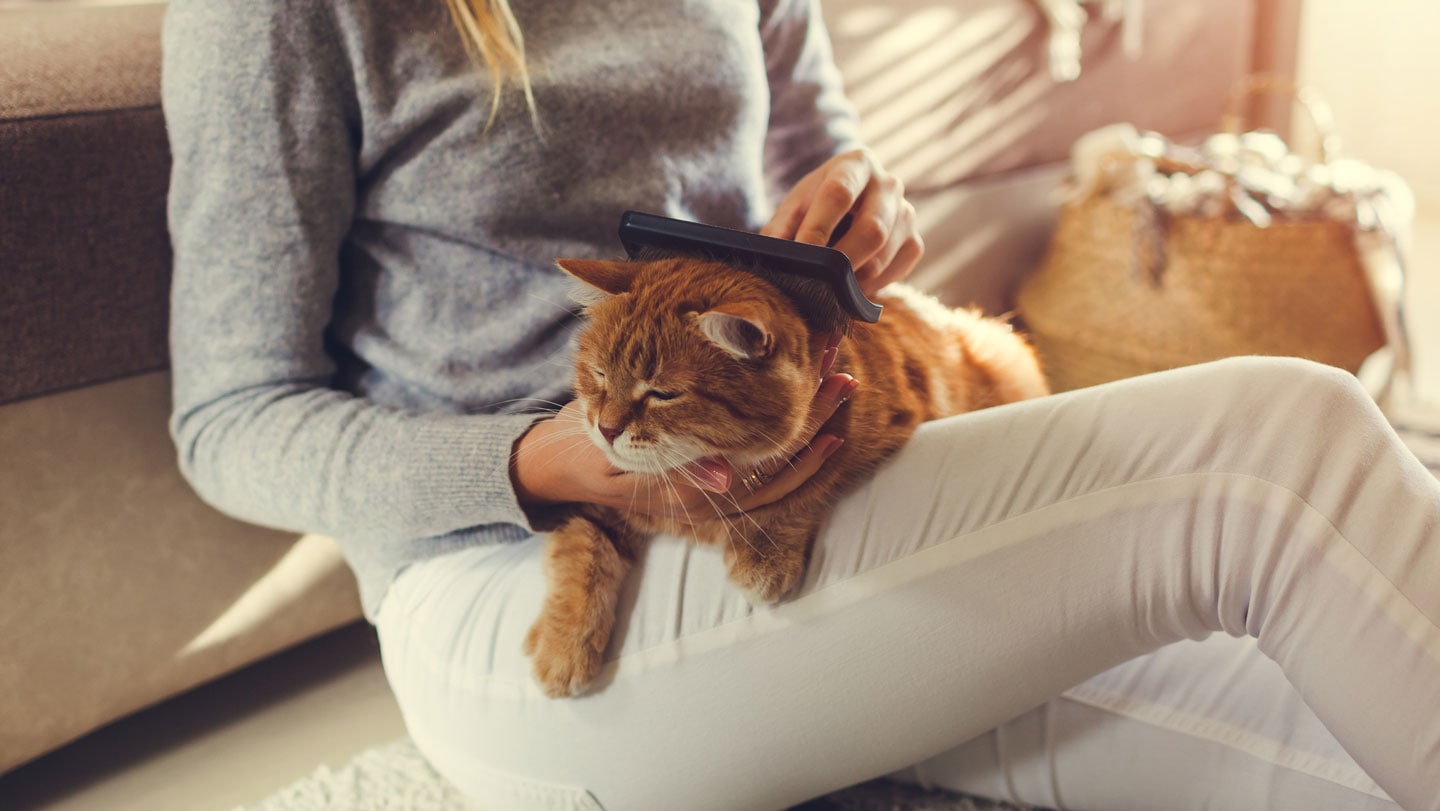
Photo: iStock.com/Maryviolet
Brushing your pet can make for a great bonding time. Plus, "frequent brushing helps remove loose, shedding hair and prevents tangles," Conner says.
How often to brush your pet
What constitutes "frequent" brushing? A few moments every day or a longer session once a week, she says.
Sounds easy enough, right? But wait. First, you need to make sure you have the right tools for the job.
Tips for brushing your pet
Pets with a longer coat do best with a slicker style brush, like this one by Miracle Care. For dogs with short or "smooth" coats, a rubber curry brush is a good option.
And then there’s actually a specific way you should brush your pet.
"A common mistake pet parents make it to just brush over the top layer of their pet’s coat," Conner says. "Effective brushing includes brushing from the skin to the tips of the hair, all over the body."
She recommends paying extra attention to areas where friction occurs, including:
- Behind the ears
- Where the collar or harness comes in contact with the coat
- The "armpit" area under the front legs
- The "tuck up" area in front of the rear legs
- Paws
- Where the tail comes in contact with the fur on the rear legs
After brushing, long-haired pets should be combed with a pet comb, like this steel one by Frisco.
"Ideally, the coat is combed from skin to hair tips, all over the body," Conner says. "If there is an area the comb cannot penetrate, go back with the brush, working in that spot until the comb can be smoothly drawn from the skin out."
Pro tip: A good quality coat spray is very helpful, as it helps the tools glide through the coat more easily. Conner recommends TropiClean Sweet Pea Tangle Remover.
Time for a Trim
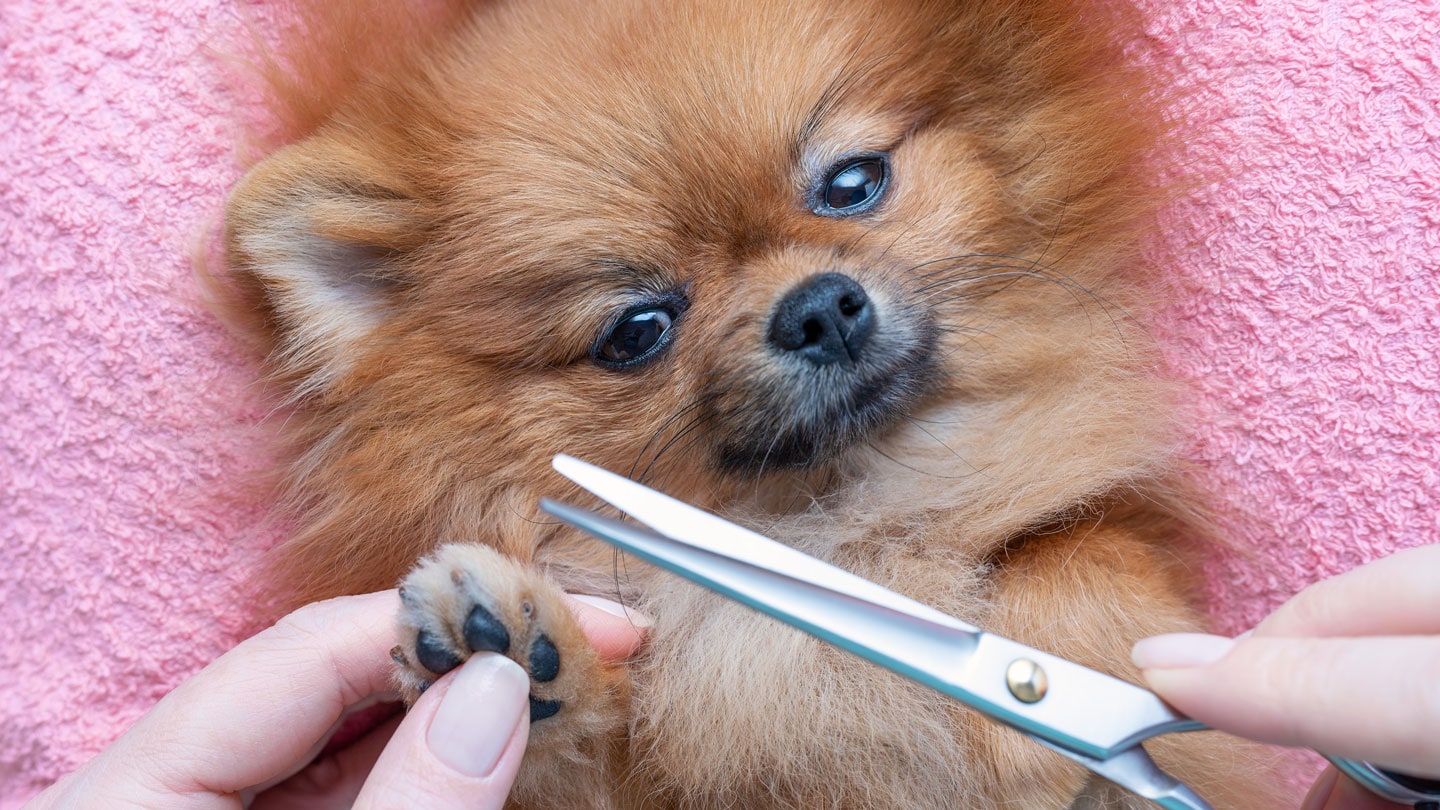
Photo: iStock.com/nadisja
Think twice before taking the clippers to your pet.
"In general, it’s best to leave hair cutting to the professionals," Conner cautions. "Pet owners need to be aware that when they use clippers or scissors, they are putting sharp tools on an unpredictable, moving target. Accidents can happen."
If you feel comfortable enough, can you do some maintenance trimming.
For example, you can trim the hair around your pet’s eyes if you are worried it has grown too long and your pet can no longer see well.
Tips for trimming your pet's hair
If you’re going to do that, Conner says to comb the hair forward, and trim the hair that hangs in front of the eyes.
"Many people make the mistake of cutting the hair close over the top of the eyes—think where human eyebrows would be—and this can be difficult for the groomer to fix," she says.
Connor recommends Top Performance’s Fine-Point shears to trim hair over the eyes, around the potty area and the feet. (ConairPRO also sells these popular rounded-tip shears.)
But again, in general, she doesn’t recommend that the average pet parent give their pet a complete haircut.
"The most important thing [you] can do is to keep the coat brushed and combed," she says. "A well-maintained coat ensures that the groomer can give the pet the desired style. Matted coats usually need to be clipped very close in order to humanely remove the tangles."
More on pet grooming:
Share:
